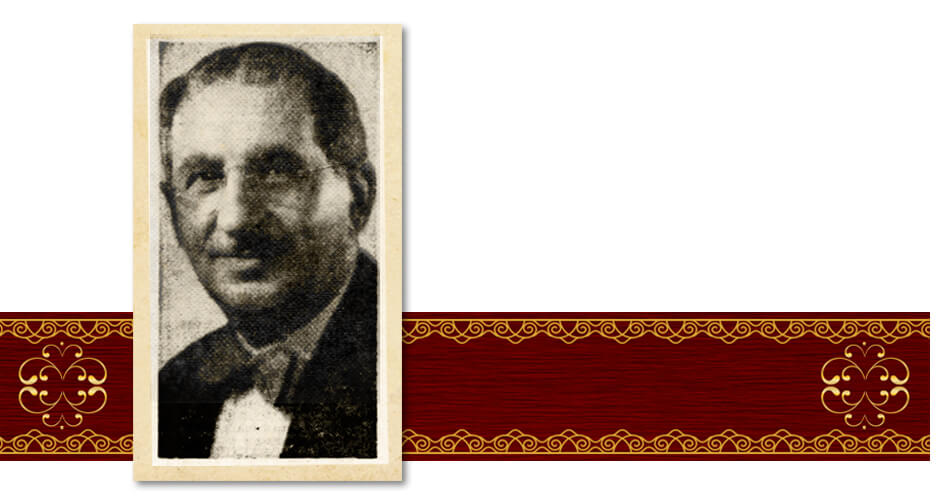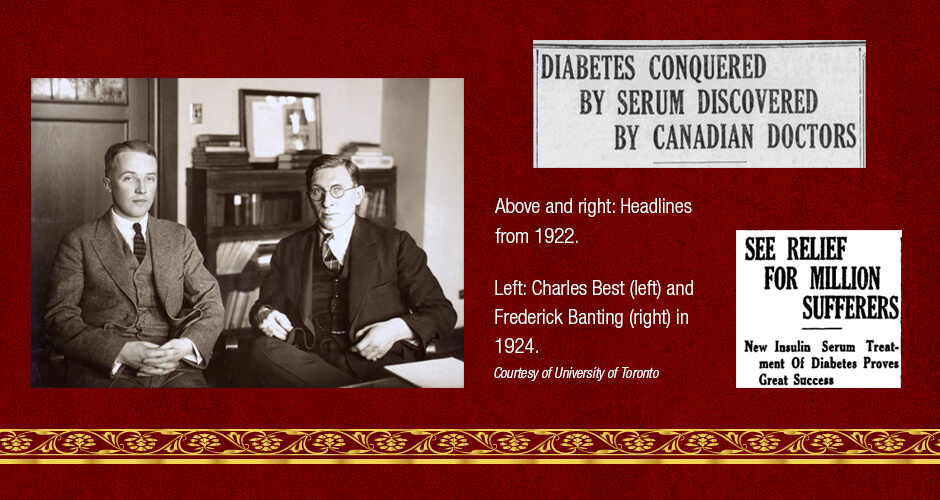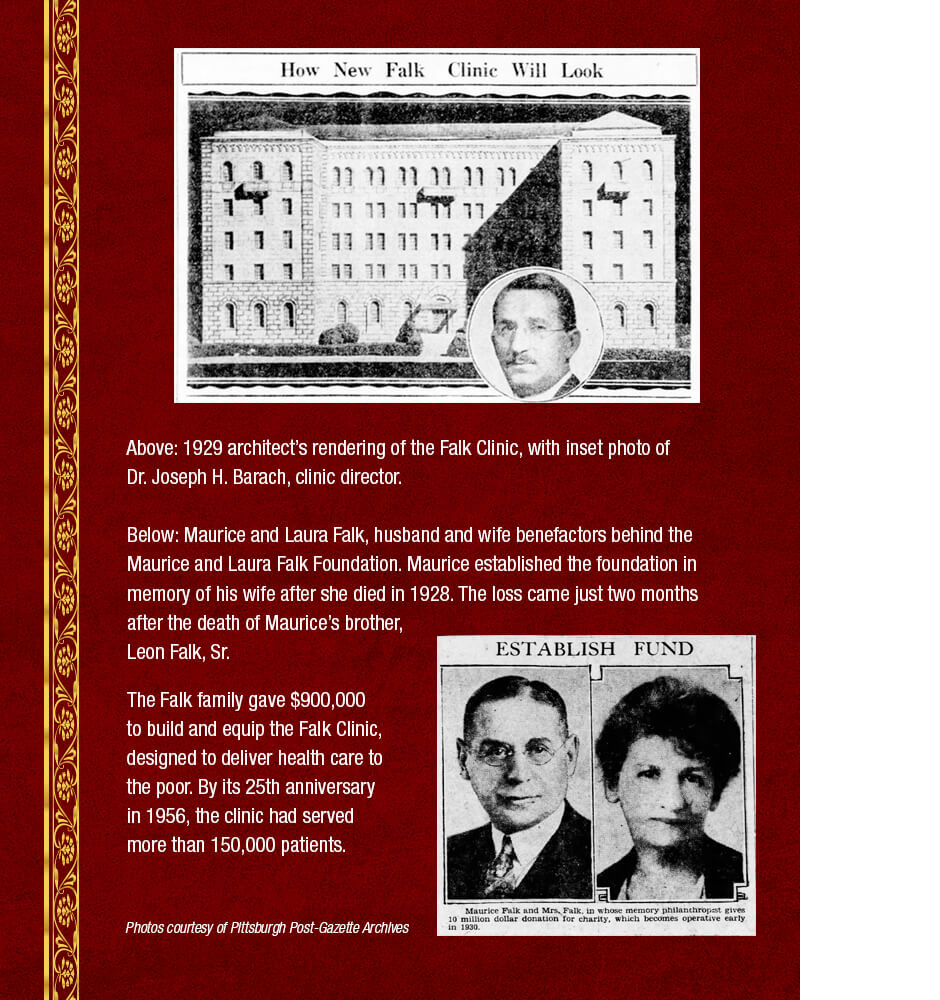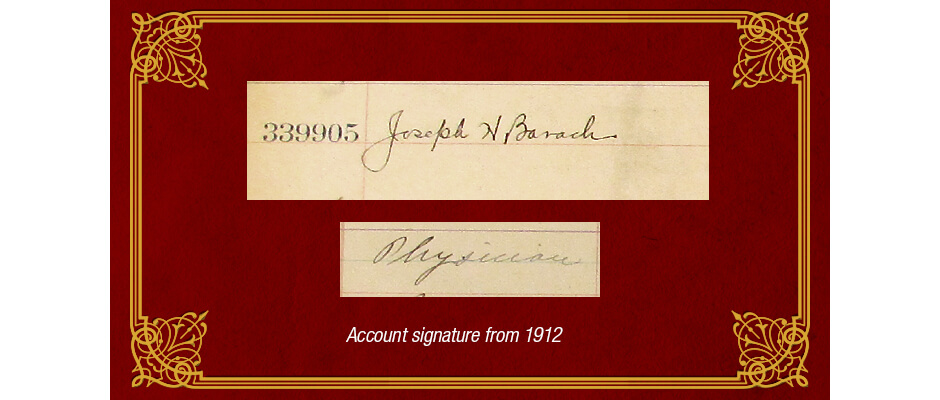Joseph H. Barach, M.D.

1883 – 1954
Joseph Hayem Barach was one of four children born to Zorah Barach and Deborah Oppenheim Barach. Around 1884, the family immigrated to the United States from the city of Kalvarija, presently in Lithuania but at that time under Russian control.
Barach grew up on Wylie Avenue in the Hill District, on a block heavily populated by immigrant families. As a youth he worked as a marble shiner, while his father, Zorah, was a clothing merchant who later became a real estate broker.
Joseph Barach graduated from the University of Pittsburgh’s School of Medicine in 1903. He interned at West Penn Hospital. Dr. Barach joined the staff of Presbyterian Hospital and also served as physician in charge of the medical staff at the Pittsburgh Newsboys’ Home, an orphanage on Stevenson and Locust Streets.
In 1915, Dr. Barach married Edna Levy, daughter of Henrietta Platner Levy and Rabbi J. Leonard Levy of Rodef Shalom Congregation. The couple made their home in Squirrel Hill and had two sons, Joseph and Richard. Richard followed his father into medicine, becoming head of the Radiology Department at Princeton University’s Medical Center. Joseph L. Barach became an engineer, working for the Propeller Division at Curtiss-Wright Corporation and Celanese Corporation of America.
During WWI, Dr. Joseph H. Barach was commissioned a captain in the United States Medical Corps, serving from April 1918 to January 1919. His assignments took him to Fort Thomas in Kentucky, Camp Sherman in Ohio and the base hospital at Camp Mills, Mineola, Long Island, New York. He specialized in cardio-vascular medicine.
Dr. Barach took an interest in endocrinology and began publishing studies on the disease of diabetes as early as 1917. At that time, the prognosis for diabetics was grim. Writing in his syndicated medical column in 1947, Dr. James W. Barton said, “Before the discovery of insulin, practically all diabetics died within a few years after the diabetes was discovered. They all lived careful lives, no work, a rigid diet and with the full knowledge that they were doomed. The diabetic had no future.”
That grim prognosis changed radically after the 1921 discovery of insulin by a pair of Canadian researchers, Dr. Frederick Banting and his assistant, physiologist Charles Best, working in the laboratories of the University of Toronto. Dr. Banting figured out how to isolate the secretions of pancreatic cells known as the islets of Langerhans.

Medical trials using purified insulin in diabetes treatment began in late 1921 and early 1922. From January to April 1922, Pittsburgh’s Presbyterian Hospital was one of just six hospitals in the United States selected to pioneer those medical trials. All fourteen diabetes patients participating in the trials at Presbyterian Hospital showed marked improvement with insulin treatment. According to Pittsburgh newspapers, one patient was admitted to the hospital in a diabetic coma; just 12 hours after being administered insulin, he regained consciousness.
When Pittsburgh hosted the Pennsylvania Medical Society's annual conference in 1923, Dr. Banting was a guest lecturer. The Canadian physician drew the kind of press and sold-out attendance usually afforded matinee idols. Also attending and speaking at the conference was Joseph Barach. In 1946, on the 25th anniversary of the discovery of insulin, Dr. Barach took the occasion to pay fond tribute to Banting, whom he had gotten to know personally. Banting had tragically perished in 1941 in a military plane crash.
The study and treatment of diabetes became the focus of the rest of Dr. Barach’s medical career. He was appointed medical director of the Falk Clinic, which opened in 1931, and was a co-founder and fourth president of the American Diabetes Association. He was the Medical Director, Outpatient Department of the Medical Center Hospitals at the University of Pittsburgh’s School of Medicine, as well as Associate Professor of Medicine at the University of Pittsburgh. He also served as chair of the Metabolism and Endocrinology Study Section of the National Institutes of Health in the late 1940s. In 1949, he authored the books, Diabetes and Its Treatment and Food and Facts for the Diabetic, just two of more than 150 contributions he made to medical literature.

In March 1954, Dr. Barach was one of seven incorporators of the non-profit organization, The Pittsburgh Camp for Diabetic Children. That same month, Joseph Barach passed away at Woman’s Hospital after a brief illness.
Dr. Barach opened a savings account with Dollar Bank in April 1912.
